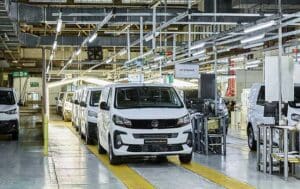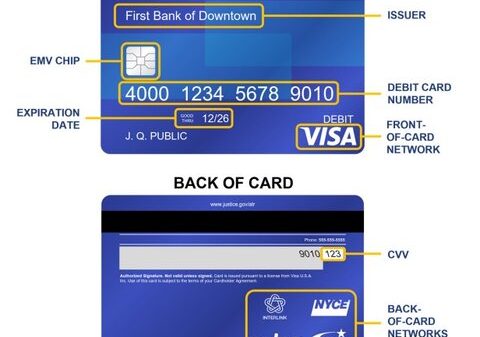In today’s competitive environment, manufacturers and plant operators must effectively monitor their assets, extract maximum performance from them, and respond rapidly to problems.
However, this circumstance is uncommon in companies that continue to function in a traditional, isolated context. These companies frequently lack defined asset performance tracking procedures. Machine inspections are frequently carried out through manual visits, giving little or no control over asset health and performance monitoring.
However, companies can now resolve these issues by using an IIoT-enabled remote monitoring framework, which results in considerable improvements in asset management, operational efficiency, and cost. Remote monitoring provides a linked environment in which enterprises may have total insight into their assets and facilities without being physically present at the place.
What is Remote Monitoring?
Cloud Remote Monitoring and Management, or cloud RMM, is a way to view, track, and control assets and facilities without needing to be on-site. Various technologies, including wireless networks, sensors, transmitters, receivers, data processing, cloud storage, and analytics, provide this potential. Together, these technologies improve visibility into asset performance, detect equipment failure, and minimize resource consumption, allowing for cost-effective and efficient operations at all times.
Benefits of Remote Monitoring for Manufacturing
Technology development is expected to bring about a major revolution in the manufacturing industry. Cloud computing may help manufacturers cut expenses, increase productivity, and improve product quality. The following are some advantages of cloud remote monitoring in the manufacturing industry:
Centralized Monitoring
Remote monitoring using the Internet of Things utilizes cloud technology to enable you to access asset information from anywhere, at any time, and on any device, even if your assets are in different physical locations. As a result, you can monitor and assess the performance and health of assets in various regions from your workplace or while on the road.
Accurate Monitoring
Instead of physically collecting data, entering it into a spreadsheet, and then doing analysis, a smart sensor placed for remote monitoring takes and saves data from an asset digitally, lowering the possibility of errors. Furthermore, using smart sensors to collect recurring data provides greater accuracy than traditional techniques.
Improved Team Efficiency
Remote monitoring provides immediate visibility into asset performance and health. Teams are no longer necessary to travel to a place on a frequent basis to monitor the equipment. Instead, they may schedule electronic data recordings at regular intervals and remotely monitor everything.
Lower Operating Costs
A smart remote monitoring system provides cognitive insights that enable you to optimize operations and achieve optimum asset efficiency, resulting in cost savings and increased profitability.
How to Successfully Migrate a Manufacturing Company to the Cloud
While the advantages of cloud-based manufacturing are attractive, the conversion process may be difficult and requires careful preparation. Below are some methods to guarantee a successful migration:
Assess Your Present Infrastructure
Before migrating to the cloud, it is critical to evaluate your present infrastructure and determine the apps, data, and processes that must be moved. This will help you assess the extent of the move and the resources needed.
Choose an Appropriate Cloud Service Provider
Choosing an appropriate cloud service provider is critical to a successful move. Consider dependability, scalability, security, and industry expertise. Evaluate many suppliers and select the one that best meets your company’s requirements.
Create a Migration Plan
Make a thorough migration strategy that describes the timing, resources, and dependencies involved in the migration process. Determine possible hazards and create contingency measures to mitigate them. Collaborate with your cloud service provider to guarantee a seamless transition.
Migrate Apps and Data
Begin the migration process by transferring your apps and data to the cloud. This may be done gradually, in stages, to reduce disturbance to your production processes. Test the migrated applications rigorously to guarantee they work correctly in the cloud.
Train Employees
Provide your staff with training and assistance so that they are comfortable with the new cloud-based tools and procedures. Ensure people comprehend the cloud’s benefits and how it can improve their productivity and cooperation.
Monitor and Optimize
Once the migration is complete, you should constantly check the performance of your cloud-based manufacturing activities. Identify optimization opportunities and use the cloud service provider’s data and insights to promote ongoing improvement.
Applications of Cloud Computing in Modern Manufacturing
Cloud computing in manufacturing provides a lot of options for all aspects of the operation, from productivity to marketing. Using cloud-based platforms enables manufacturers to become more agile, cost-effective, and competitive in today’s ever-changing market environment. Let us look at the applications in more detail below:
Supply Chain Management
Manufacturers may receive real-time supply chain information with cloud-based technologies. This enables businesses to spot bottlenecks, predict demand variations, and make data-driven decisions to improve operations. Manufacturers can improve overall supply chain efficiency and responsiveness by boosting collaboration and visibility, which reduces costs and increases customer satisfaction.
Inventory Management
The cloud inventory management systems provide manufacturers with a consolidated platform for tracking inventory, managing suppliers, and automating critical replenishment procedures. Manufacturers may estimate demand and modify inventory levels based on historical data, demand patterns, and market trends.
Predictive Maintenance and Quality Control
Cloud-based predictive maintenance systems allow for remote and real-time equipment condition monitoring. This information can be used in machine learning algorithms to detect early warning signals of equipment breakdown and automatically schedule maintenance. It reduces downtime, optimizes maintenance schedules, and increases overall equipment efficacy.
Conclusion
Manufacturers that embrace cloud technology get a competitive edge while also encouraging innovation and adapting fast to market developments. In summary, cloud computing in manufacturing allows organizations to develop high-quality goods, fulfill changing client needs, and retain market leadership.
Read more:
Cloud-Based Remote Monitoring for Manufacturing – Key Benefits
























